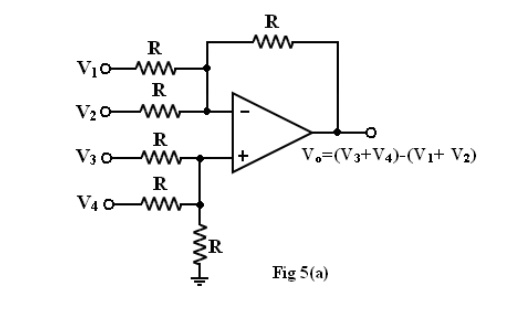Chapter: Linear Integrated Ciruits : Application of Op-Amp
Adder/Subtractor
Adder/Subtractor:

Similarly,
it can be shown that the output voltage V04 due to V4 alone is
V 04= V 4
Thus, the
output voltage Vo due to all four input voltages is given by
Vo= V01+ V02+ V03+ V04
V o=@V1@V2+ V 3+ V 4
So, the
circuit is an adder-subtractor.
Instrumentation Amplifier:
The
difference gain of this instrumentation amplifier R, however should never be
made zero, as this will make the gain infinity. To avoid such a situation, in a
practical circuit, a fixed resistance in series with a potentiometer is used in
place of R.
Figure
6(c) shows a differential instrumentation amplifier using Transducer Bridge.
The circuit uses a resistive transducer whose resistance changes as a function
of the physical quantity to be measured.
The
bridge is initially balanced by a dc supply voltage Vdc so that V1=V2.
As the physical quantity changes, the resistance RT of the transducer also
changes, causing an unbalance in the bridge (V1 ≠V2).
This differential voltage now gets amplified by the three op-amp differential
instrumentation amplifier.
There are
number differential applications of instrumentation amplifier with the
transducer bridge, such as temperature indicator, temperature controller, and
light intensity meter to name a few.
Related Topics